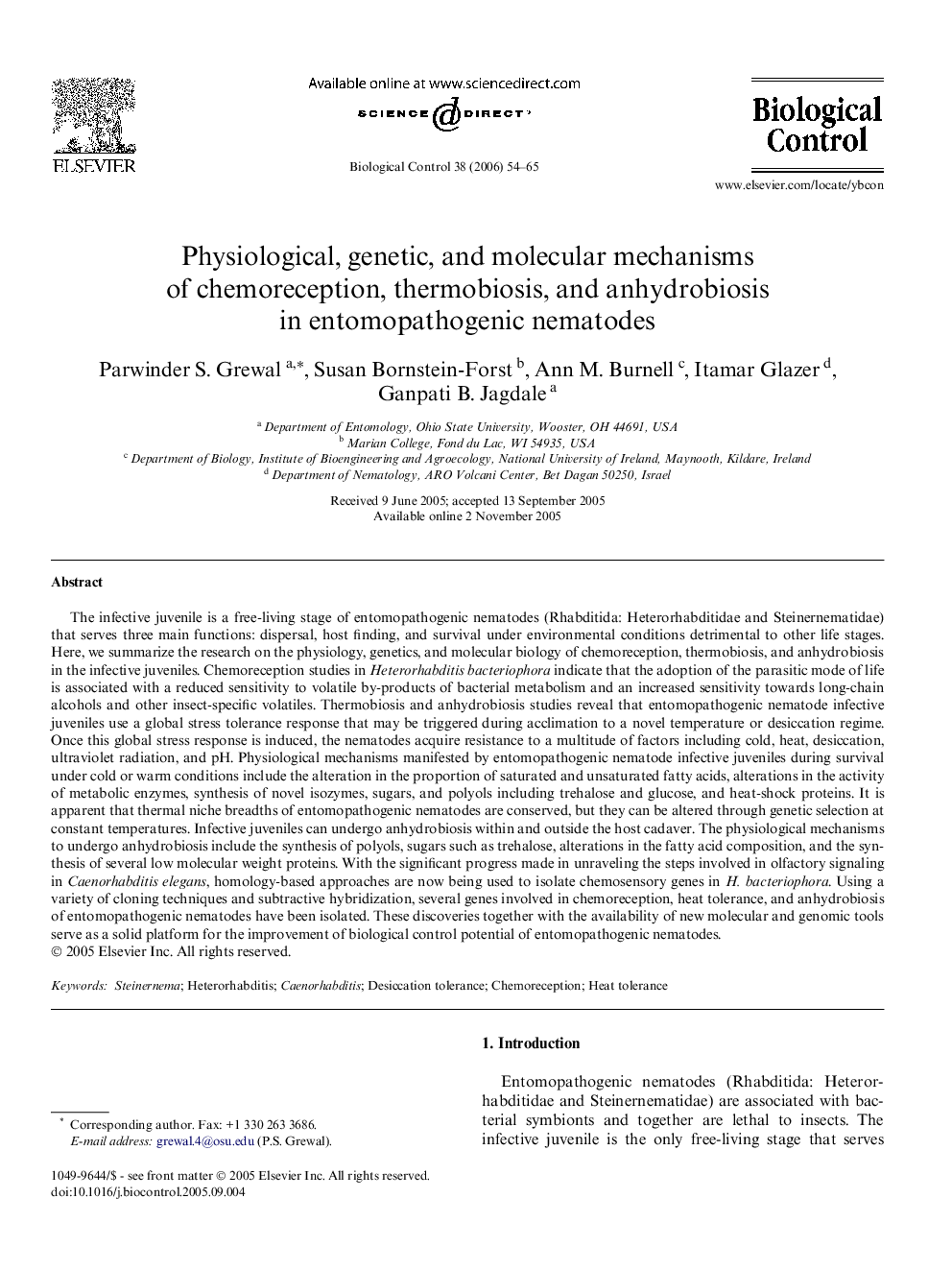| Article ID | Journal | Published Year | Pages | File Type |
|---|---|---|---|---|
| 4505361 | Biological Control | 2006 | 12 Pages |
The infective juvenile is a free-living stage of entomopathogenic nematodes (Rhabditida: Heterorhabditidae and Steinernematidae) that serves three main functions: dispersal, host finding, and survival under environmental conditions detrimental to other life stages. Here, we summarize the research on the physiology, genetics, and molecular biology of chemoreception, thermobiosis, and anhydrobiosis in the infective juveniles. Chemoreception studies in Heterorhabditis bacteriophora indicate that the adoption of the parasitic mode of life is associated with a reduced sensitivity to volatile by-products of bacterial metabolism and an increased sensitivity towards long-chain alcohols and other insect-specific volatiles. Thermobiosis and anhydrobiosis studies reveal that entomopathogenic nematode infective juveniles use a global stress tolerance response that may be triggered during acclimation to a novel temperature or desiccation regime. Once this global stress response is induced, the nematodes acquire resistance to a multitude of factors including cold, heat, desiccation, ultraviolet radiation, and pH. Physiological mechanisms manifested by entomopathogenic nematode infective juveniles during survival under cold or warm conditions include the alteration in the proportion of saturated and unsaturated fatty acids, alterations in the activity of metabolic enzymes, synthesis of novel isozymes, sugars, and polyols including trehalose and glucose, and heat-shock proteins. It is apparent that thermal niche breadths of entomopathogenic nematodes are conserved, but they can be altered through genetic selection at constant temperatures. Infective juveniles can undergo anhydrobiosis within and outside the host cadaver. The physiological mechanisms to undergo anhydrobiosis include the synthesis of polyols, sugars such as trehalose, alterations in the fatty acid composition, and the synthesis of several low molecular weight proteins. With the significant progress made in unraveling the steps involved in olfactory signaling in Caenorhabditis elegans, homology-based approaches are now being used to isolate chemosensory genes in H. bacteriophora. Using a variety of cloning techniques and subtractive hybridization, several genes involved in chemoreception, heat tolerance, and anhydrobiosis of entomopathogenic nematodes have been isolated. These discoveries together with the availability of new molecular and genomic tools serve as a solid platform for the improvement of biological control potential of entomopathogenic nematodes.
